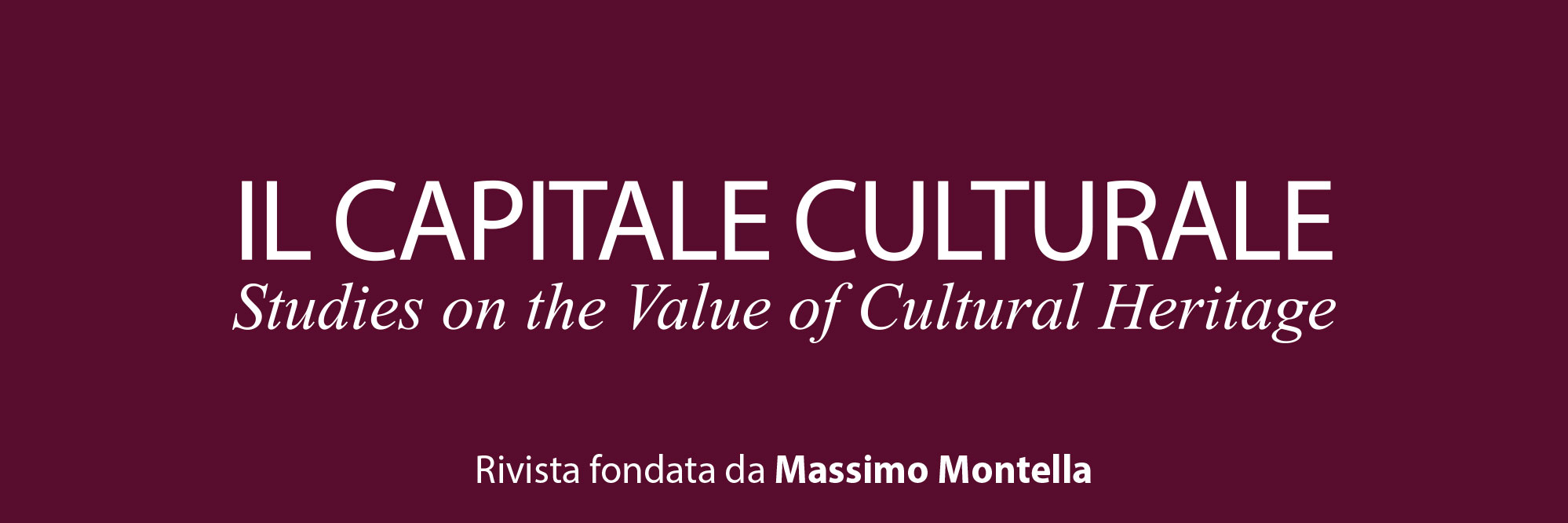Expansion and theatricality: Ovid frescoes in the Ráday Mansion, Pécel
Downloads
Pubblicato
Fascicolo
Sezione
Licenza
Tutti i materiali pubblicati sono coperti da copyright, mantenuto dall'Università di Macerata che ne supporta finanziariamente e tecnicamente la pubblicazione.
La licenza adottata è la Creative Commons - Attribuzione/Condividi allo stesso modo. Ovvero, gli autori che pubblicano su questa rivista accettano le seguenti condizioni:
- Gli autori mantengono i diritti sulla loro opera e cedono alla rivista il diritto di prima pubblicazione dell'opera, contemporaneamente licenziata sotto una Licenza Creative Commons - Attribuzione che permette ad altri di condividere l'opera indicando la paternità intellettuale e la prima pubblicazione su questa rivista.
- Gli autori possono aderire ad altri accordi di licenza non esclusiva per la distribuzione della versione dell'opera pubblicata (es. depositarla in un archivio istituzionale o pubblicarla in una monografia), a patto di indicare che la prima pubblicazione è avvenuta su questa rivista.
- Gli autori possono diffondere la loro opera online (es. in repository istituzionali o nel loro sito web) prima e durante il processo di submission, poiché può portare a scambi produttivi e aumentare le citazioni dell'opera pubblicata.
DOI:
https://doi.org/10.13138/2039-2362/3346Abstract
Ovid made a rare appearance in the Hungarian countryside in the mid-18th century. Enlarged illustrations from the Metamorphoses formed a mythological cycle in the Ceremonial Hall of the late baroque mansion of the noble Ráday family. The mansion was built in the 1720’s in Pécel by Pál Ráday and was renovated later in the century by his son Gedeon. The original decoration consisted of 16 large frescoes and was inspired by two illustrated Ovid editions published in Amsterdam in the 1730’s. Each scene is supplemented with Gedeon’s verses in Hungarian. The wall paintings form a significant part of a larger decoration program, which aspires to present the encyclopaedic knowledge of the era. This paper aims to provide a comprehensive overview of the mythological cycle including its visual sources and textual additions, examine its historical and cultural context, analyse its program and acknowledge the role of the patron in the dissemination of classical knowledge in Hungary. It claims that the Ceremonial Hall provides a scenery for theatrical representations, encloses the idea of theatricality and outlines yet another important chapter in the afterlife of Ovid’s Metamorphoses.
Riferimenti bibliografici
Altena S. van (2019), The Tableaux du Temple des Muses, «Simiolus: Netherlands Quarterly for the History of Art», 41, n. 1/2, pp. 74-90.
Avram A., Dávid F. (1996), A nagyszebeni Brukenthal palota belső díszítése. «Ars Hugarica», n. 2. pp. 177-188, https://epa.oszk.hu/01600/01615/00068/pdf/EPA01615_ars_hungarica_1996_02_177-188.pdfy>, 18.12.2023.
Bannet E.T. (2013), History of Reeading: The long Eighteenth Century, «Literature Compass», 10, n. 2, pp. 122-133, <https://doi.org/10.1111/lic3.12026>, 18.12.2023.
Berecz Á. (2003a), Középnemesi barokk életmód a Ráday-család levelezése alapján (1750-1779), in Aranyidők a péceli Ráday-kastélyban, edited by Á. Berecz, J. Lángi. Budapest: Műemlékek Állami Gondnoksága, pp. 8-70.
Berecz Á. (2003b), Képes beszéd a falakon. A péceli díszterem falképsorozatának lehetséges üzenete, in Aranyidők a péceli Ráday-kastélyban, edited by Á. Berecz, J. Lángi. Budapest: Műemlékek Állami Gondnoksága, pp. 118-132.
Csanádi-Bognár Sz. (2008), Kazinczy Ferenc és a magyar művészettörténeti nyelv, «Ars Hungarica», 36, n. 1/2, pp. 93-178, <https://epa.oszk.hu/01600/01615/00006/pdf/03Csanadi_93_178.pdf>, 18.12.2023.
De Marolles M. (1733), Le Temple des Muses: orné de LX. tableaux, oú sont représentés les événemens les plus remarquables de l’antiquité fabuleuse, Amsterdam: Zacharie Chatelain.
Garas K. (1955), Magyarországi festészet a XVIII. században. Budapest: Akadémiai Kiadó.
Jackson Reist I. (2013), All the World’s A Stage. The Theater Conceit in Early Modern Italy, in A Companion to Renaissance and Baroque Art, edited by B. Bohn, J.M. Saslow, Hoboken, New Jersey: Wiley & Sons, pp. 463-483.
Korhecz Papp Zs. (2015), “Akit a sors kiemelt a többi festő közül”. Schervitz Mátyás (†1771) budai festő oltárképei, «Művészettörténeti Értesítő», 64, pp. 157-175, <http://real.mtak.hu/37585/>, 18.12.2023.
Jernyei Kiss J. (2017), Johann Nepomuk Schöpf (1733–1798) Magyarországon: Nagyvárad, Pécel, Buják, «Művészettörténeti Értesítő», 66, n. 2, pp. 191-200.
Lángi J. (2003), A péceli Ráday-kastély falképei, in Aranyidők a péceli Ráday-kastélyban, edited by Á. Berecz, J. Lángi, Budapest: Műemlékek Állami Gondnoksága, pp. 71-114.
Mályuszné Császár E. (1956), A Rádayiak és hazai színjátszásunk, «A Ráday Gyűjtemény Évkönyvei», I, pp. 72-80.
Ovid (1732), Les métamorphoses d’Ovide: en latin, traduites en françois... ouvrage enrichi de Figures en taille douce, Amsterdam: Wetsteins and Smith.
Péter Z. (1962), “A jubiláló Ráday-Könyvtár”, «Magyar könyvszemle», 78, no. 4, pp. 303-316, <http://real.mtak.hu/117581/1/303_Raday_MagyarKonyvszemle_1962.pdf>, 18.12.2023.
Segesvary V. (2005), The history of a Private Library in 18th century Hungary. The library of Pál and Gedeon Ráday, The Hague: Mikes International Foundation,
<http://www.federatio.org/mi_bibl/VictorSegesvary_Raday.pdf>, 18.12.2023.
Somkuti G. (1968), Ráday Gedeon bécsi könyvbeszerzője (Nagy Sámuel 1730-1802), «Magyar Könyvszemle», 84, n. 2, pp. 147-170, <https://epa.oszk.hu/00000/00021/00271/pdf/MKSZ_EPA00021_1968_84_02_147-170.pdf>, 18.12.2023.
Szarvasi M. (1939), Magánkönyvtáraink a XVIII. században. Az Országos Széchényi-Könyvtár kiadványai, VII, Budapest: Magyar Nemzeti Múzeum Országos Széchényi-Könyvtára, <https://mek.oszk.hu/03200/03246/pdf/03246.pdf>, 18.12.2023.
Zsindely E. (1956), A péceli Ráday-kastély, «Művészettörténeti Értesítő», 4, pp. 253-276, <http://real-j.mtak.hu/530/>, 18.12.2023.




